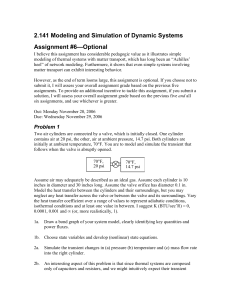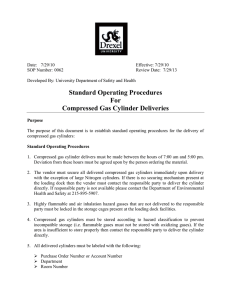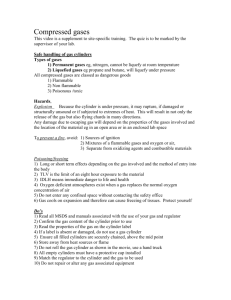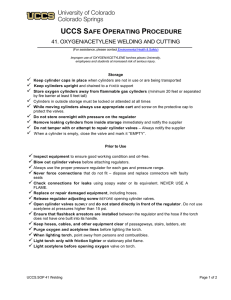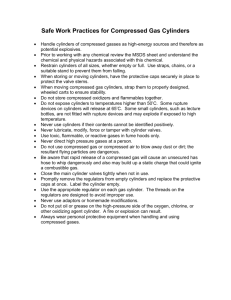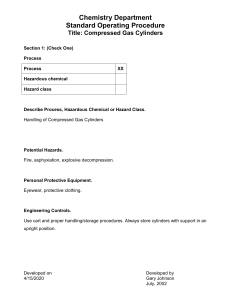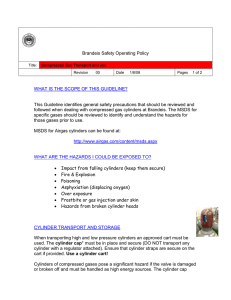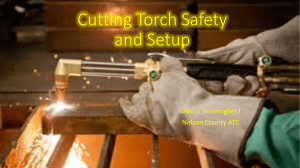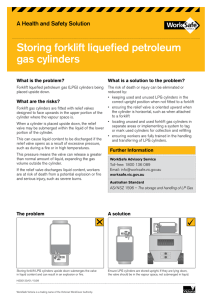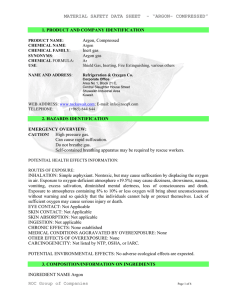UCCS S O P AFE
advertisement
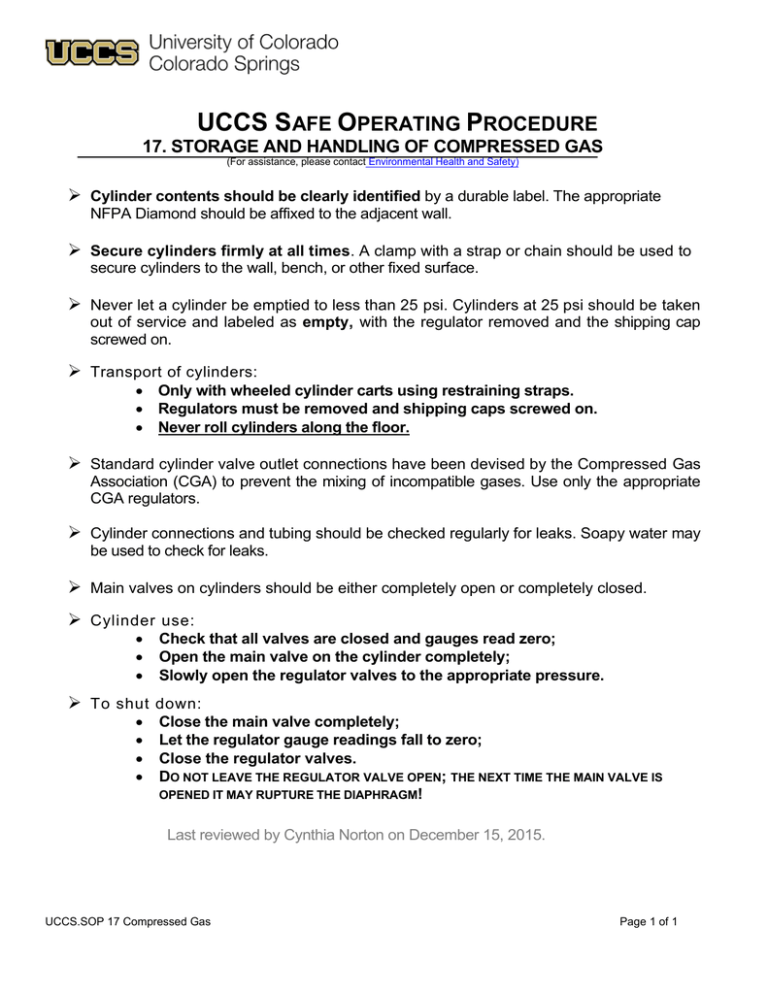
UCCS SAFE OPERATING PROCEDURE 17. STORAGE AND HANDLING OF COMPRESSED GAS (For assistance, please contact Environmental Health and Safety) Cylinder contents should be clearly identified by a durable label. The appropriate NFPA Diamond should be affixed to the adjacent wall. Secure cylinders firmly at all times. A clamp with a strap or chain should be used to secure cylinders to the wall, bench, or other fixed surface. Never let a cylinder be emptied to less than 25 psi. Cylinders at 25 psi should be taken out of service and labeled as empty, with the regulator removed and the shipping cap screwed on. Transport of cylinders: Only with wheeled cylinder carts using restraining straps. Regulators must be removed and shipping caps screwed on. Never roll cylinders along the floor. Standard cylinder valve outlet connections have been devised by the Compressed Gas Association (CGA) to prevent the mixing of incompatible gases. Use only the appropriate CGA regulators. Cylinder connections and tubing should be checked regularly for leaks. Soapy water may be used to check for leaks. Main valves on cylinders should be either completely open or completely closed. Cylinder use: Check that all valves are closed and gauges read zero; Open the main valve on the cylinder completely; Slowly open the regulator valves to the appropriate pressure. To shut down: Close the main valve completely; Let the regulator gauge readings fall to zero; Close the regulator valves. DO NOT LEAVE THE REGULATOR VALVE OPEN; THE NEXT TIME THE MAIN VALVE IS OPENED IT MAY RUPTURE THE DIAPHRAGM! Last reviewed by Cynthia Norton on December 15, 2015. UCCS.SOP 17 Compressed Gas Page 1 of 1
